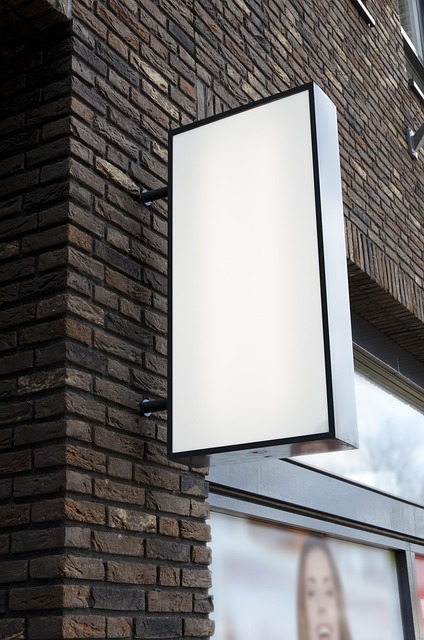Industrial air curtains are efficient solutions for factories and warehouses experiencing high HVAC needs, harsh climates, and energy loss through large openings. These powerful fans create airtight seals around entry points, reducing heat transfer and minimizing energy wastage. By preventing conditioned air escape and external elements intrusion, industrial air curtains lower operational costs, optimize climate control, and contribute to a more sustainable industrial environment, especially in cold storage areas.
In today’s energy-conscious world, minimizing energy loss in HVAC-intensive environments is paramount. Understanding where and how energy is lost within these systems is crucial. This article explores the role of industrial air curtains as an innovative solution.
We’ll delve into their functionality, demonstrating how they create a robust barrier to prevent unwanted air exchange, thus reducing energy loss significantly. From factories to data centers, industrial air curtains offer an efficient, sustainable approach to optimize HVAC performance and cut operational costs.
- Understanding Energy Loss in HVAC Systems
- Introduction to Industrial Air Curtains
- How Industrial Air Curtains Minimize Energy Loss
- Benefits and Applications of Using Industrial Air Curtains
Understanding Energy Loss in HVAC Systems

In industrial settings with high-intensity HVAC (Heating, Ventilation, and Air Conditioning) demands, such as factories and warehouses, energy loss becomes a significant concern. These environments often feature large openings like loading docks, manufacturing door systems, and warehouse entrances, which are crucial for material flow but also present opportunities for substantial heat transfer. Without adequate protection, hot or cold air escapes, leading to increased energy consumption and higher operational costs. This is particularly problematic in harsh climates where maintaining optimal indoor temperatures is essential for both worker comfort and production efficiency.
Industrial air curtains offer a highly effective solution to mitigate these energy losses. Acting as robust industrial air barriers, they form an airtight seal around large openings like factory entrances, cold storage areas, or loading docks. Unlike traditional methods that rely on continuous operation of HVAC systems to compensate for leaks, heavy-duty air curtains use powerful fans to create a strong barrier, containing the indoor climate and minimizing the need for excessive heating or cooling. This not only reduces energy expenses but also contributes to a more sustainable industrial landscape.
Introduction to Industrial Air Curtains

Industrial air curtains are innovative solutions designed to address energy loss in harsh environments characterized by high-intensity heating, ventilation, and air conditioning (HVAC) systems. These advanced barriers create a sealed zone at entry points, preventing conditioned air from escaping while keeping external elements out. This is particularly crucial in warehouses, factories, and loading docks where maintaining optimal industrial climate control can be both energy-intensive and costly.
By acting as heavy-duty air curtains, these industrial air barriers are specifically engineered to withstand the demands of manufacturing door systems and cold storage environments. They offer a practical approach to large opening protection, significantly reducing energy wastage by minimizing the need for continuous operation of factory entrance heating or other extensive HVAC systems.
How Industrial Air Curtains Minimize Energy Loss

Industrial air curtains play a pivotal role in minimizing energy loss within HVAC-intensive environments by creating a robust barrier that regulates airflow and temperature. These heavy-duty air curtains, often installed at warehouse entrances, loading docks, and large openings, function as an advanced industrial air barrier, preventing conditioned air from escaping into unheated or cooled spaces. By sealing off these gaps, they significantly reduce the load on industrial HVAC systems, thereby lowering energy consumption and associated costs.
Furthermore, the strategic placement of these air curtains helps maintain optimal indoor climate control. In manufacturing facilities where cold storage barriers are essential, for instance, they ensure that chilled air remains within the designated areas, preventing unwanted warmth from entering. This efficient use of energy not only benefits businesses by reducing operational expenses but also contributes to a more sustainable and environmentally friendly industrial landscape.
Benefits and Applications of Using Industrial Air Curtains

Industrial air curtains offer a multitude of benefits for environments heavily reliant on HVAC systems, such as factories and warehouses. By acting as robust industrial air barriers, they significantly minimize energy loss, enhancing industrial climate control and reducing the strain on expensive manufacturing door systems and large opening protection. This is especially crucial in cold storage barriers where maintaining optimal temperatures is vital.
These heavy-duty air curtains are designed for efficient use in loading dock air curtains, providing a cost-effective solution to prevent heat loss during frequent entrance and exit of vehicles. In fact, their application extends far beyond warehouse entrance protection; they can also be utilized in various industrial settings where factory entrance heating is a concern, ultimately optimizing the performance of sensitive industrial HVAC systems.
Industrial air curtains have emerged as a game-changer in minimizing energy loss within HVAC-intensive environments. By strategically placing these innovative solutions, businesses can significantly reduce heating and cooling costs while improving overall system efficiency. Through their advanced design, industrial air curtains create a robust barrier, preventing warm or cold air from escaping and maintaining desired indoor temperatures. This simple yet effective method offers a sustainable and cost-efficient approach to energy conservation, making industrial air curtains an essential consideration for modern facilities aiming to optimize their HVAC systems.
